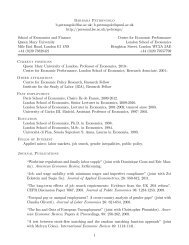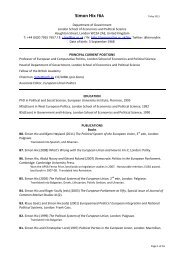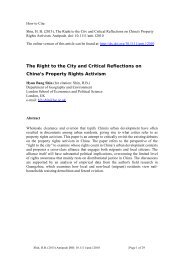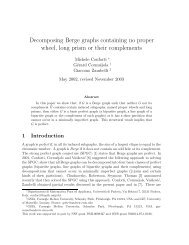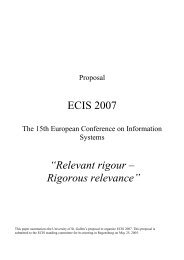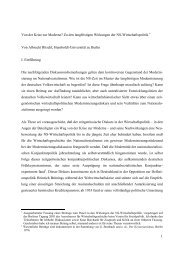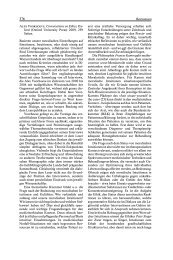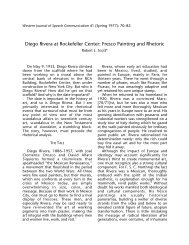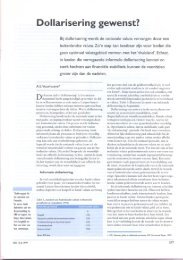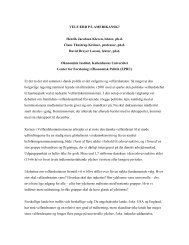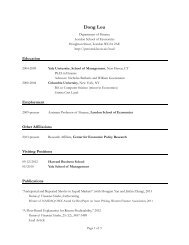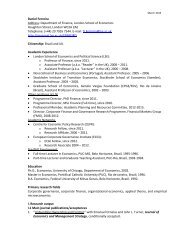Reference: MA, Debin. “The Great Silk Exchange: How the World ...
Reference: MA, Debin. “The Great Silk Exchange: How the World ...
Reference: MA, Debin. “The Great Silk Exchange: How the World ...
You also want an ePaper? Increase the reach of your titles
YUMPU automatically turns print PDFs into web optimized ePapers that Google loves.
thrived under <strong>the</strong> patronage of central powerful empires from Han and Tang China and to<br />
Rome, Mongols, Ottoman, Safavid Persia and Russia, which offered security against<br />
robbery and brigandage, maintained <strong>the</strong> roads, and levied predictable customs dues. 18<br />
Viewed from this perspective, <strong>the</strong> superiority of <strong>the</strong> sea route became clear. The sea<br />
wind that powered <strong>the</strong> ships was free and frequently traveled routes offered no problem,<br />
since one vessel’s sails do not spoil <strong>the</strong> wind for ano<strong>the</strong>r’s. The problem of congestion and<br />
possible damage to <strong>the</strong> environment due to too many travels along <strong>the</strong> land route was not a<br />
problem on <strong>the</strong> wide and open sea. Protection costs for ships at sea were usually less<br />
troublesome than for caravans, if only because a ship traversed uninhabited expanses,<br />
whereas a caravan was seldom far from populated places, and caravans concentrated wealth<br />
in a way that tempted innumerable plunderers (McNeill 1971: 1119, 1123).<br />
<strong>How</strong>ever, <strong>the</strong> early primitive ship-building and navigational technology, as well as<br />
limited geographical knowledge, initially prevented full exploitation of <strong>the</strong> non-rivalry and<br />
non-exclusive nature of <strong>the</strong> open sea. The early stages of ocean transportation shared many<br />
characteristics of a peddling trade over land routes: sailing short stages with little cargo and<br />
high crew costs (Curtin 1984: 119). <strong>How</strong>ever, according to Pierre Chaunu (1969), <strong>the</strong> pace<br />
of technological progress in marine transport rapidly overtook that in land transport after<br />
<strong>the</strong> thirteenth century. Continuous progress in nautical technology enabled ships to sail<br />
far<strong>the</strong>r, faster and cheaper on <strong>the</strong> open sea; and with <strong>the</strong> discovery of an all-sea route from<br />
Europe to Asia and <strong>the</strong> crossing of <strong>the</strong> Pacific, it was only a matter of time before <strong>the</strong> sea<br />
route dominated global long-distance trade.<br />
The “chains of markets” and all <strong>the</strong>ir associated problems which had long<br />
28



